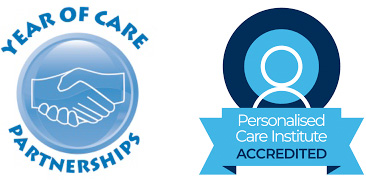People living with frailty are often unable to get to the surgery and may not be included in routine personalised care and support planning (PCSP).
The resources below have been prepared by Year of Care Partnerships to support PCSP for people with frailty in a community setting.
PCSP is an approach which retains the clinical benefits of frailty assessment whilst re-focussing the approach around the person.
We have also developed a toolkit to support teams and organisations in the design and delivery of personalised, proactive care in line with the hospital to community shift outlined in the 10 year health plan.
| 1. | Notes on resources to match the PCSP steps for those living with frailty | Explanatory notes about the resources in this section to match the PCSP steps for those living with frailty. |
| 2. | Informing people about the service | 2a. Finding the words Proactive care teams should carefully consider how they approach people about the offer of personalised care and support planning, this document offers some top tips. 2b. Leaflet to introduce proactive care A leaflet for patients to introduce the proactive care service and team members. 2c. An invitation letter A sample invitation letter for teams to adapt locally. |
| 3. | Patient self-assessment | 3a. Letter to accompany the self-assessment tool To invite the person to complete a self-assessment of frailty 3b. Self-assessment tool A self-assessment tool based on the Clinical Frailty Score |
| 4. | Patient prompts for reflection ahead of PCSP conversation | 4a. Preparing for care planning – frailty A document to help patients to prepare for proactive care and support planning. This would normally be used as a front page before ‘Things that are bothering me’. 4b. Things that are bothering me A reflective prompt that supports the person to identify issues and concerns which they want the professional to know about, it can form part of ‘self-assessment’ against the domains of comprehensive geriatric assessment. 4c. My medicines An A5 leaflet to support people to reflect and highlight any concerns they have around medications. 4d. Falls prevention leaflet A leaflet to share with patients at risk of falls. 4e. What could really make a difference – care homes A document that helps patients living in care homes to prepare for care and support planning |
| 5. | Comparison of items in Brief CGA and Year of Care document ‘‘Things that are bothering me’ | This comparison lays out the fields usually collected in the Brief CGA that are covered by the ‘Things that are bothering me’ document. It also shows the extra information collected by the ‘Things that are bothering me’ document. |
| 6. | My personal plan | 6a. Care and support plan 6b. Example care and support plan (completed following care and support planning conversation) |


